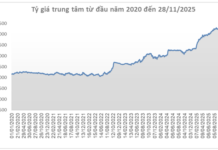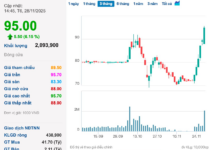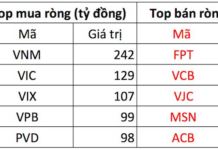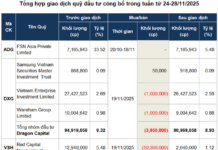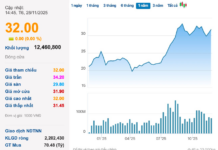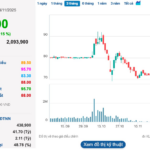Last week, two lobbying groups for the recycling industry in Europe issued a grave warning: the sector is facing “an unprecedented crisis, even more serious than the Covid-19 pandemic.” Since the spring, the price of sorted used clothing has fallen below the cost of processing it. In other words, without support, the sector will face “widespread bankruptcy,” the groups said.
According to The Business of Fashion magazine, the fashion waste processing industry is being impacted from multiple directions. The wars in Ukraine and the Middle East have disrupted major markets and increased logistics costs, wreaking havoc on an industry operating on thin profit margins. Heightened regulatory scrutiny is also driving uncertainty about how the industry will function in the future…
But the main culprit is the ever-increasing volume of cheap, ultra-fast fashion and the disruption that these ultra-cheap business models are causing to the economy. “It’s a perfect storm,” said Mohammed Patel, business development director at the UK trade group, Textile Recycling Association (TRA).
A decade ago, on average, about 67% of the material collected in Scandinavia, Germany, Austria, and Italy could be reused; now, that figure is 64%. The trade itself is also becoming more controversial, with advocacy groups warning that receiving countries have become dumping grounds for the fashion waste of wealthy nations.

While exactly how much of the exported used clothing becomes waste upon arrival in African and Latin American markets is a subject of heated debate, the imported fashion waste piles in Chile’s Atacama Desert and the tangled fabric scraps on Ghana’s beaches have become powerful visual symbols of the high environmental cost of disposable fashion.
According to Boston Consulting Group (BCG), based on the research The Global Fashion Market (2022-2028) and Statista, the global fast fashion market is expected to surpass €250 billion by 2028. With a rapid growth rate of about 3.8% annually, the fast fashion industry has caused far-reaching consequences.
Fast fashion has become popular due to the constant introduction of new styles throughout the year. As a result, fast fashion giants are engaged in a race to offer the most diverse range of clothing to consumers. According to the non-governmental organization Friends of the Earth, the Chinese brand Shein offers 470,000 styles on its website, a massive volume compared to other fast fashion brands. Additionally, Shein’s daily assortment is 900 times larger than that of a typical French retailer.
Gildas Minvielle, director of the Economic Observatory at the French Fashion Institute (IFM), points out another attractive feature of fast fashion: affordable prices, with an average item costing less than €10. The widespread advertising of these brands, coupled with tempting prices, has fueled excessive consumerism. On average, each French person purchases approximately 9.5 kg of textiles and footwear per year.

An investigation into the waste generated by the fashion industry revealed that European countries have sold millions of tons of used clothing and textiles made from synthetic fibers to African and Asian nations. Many of these countries have become dumping grounds for illegal waste from the fast fashion industry and are now facing irreversible environmental consequences.
In this complex market environment, Europe’s efforts to curb textile waste remain uncertain. According to upcoming regulations, member states will need to have systems in place to collect textile waste by next year, and Brussels is developing plans for a so-called extended producer responsibility program, where brands will have to pay to cover the costs of managing textile waste. Lobbying groups are calling for more support for the sector, including short-term financial incentives and increased investment in recycling technology and infrastructure.
However, advocates warn that if regulators do not target the increased consumption of fast fashion, they will only be addressing the symptoms rather than the root cause. “If clothes are not considered valuable enough for European consumers to spend time sewing back on a button when it falls off, then they are not valuable enough to justify the multiple steps needed to recirculate them, including collection, sorting, exporting, washing, marketing, and reselling.”
Consequently, the European Union is considering amending regulations on the quality of textiles and raising the standards. The goal is that, by 2030, textile products on the European market will be durable and recyclable. According to this new vision, textiles in Europe will be predominantly made from recycled fibers, free from harmful substances, and produced in an environmentally and socially responsible manner.

The upcoming regulations could be stringent, requiring clothing importers to take responsibility for the entire product life cycle, including recycling and reuse. Delara Burkhardt, a rapporteur for the European Parliament, stated, “We are demanding a comprehensive approach to the textile sector to ensure that it shifts from a fast fashion model to a circular textile one. We are calling for the establishment of sustainable standards in the textile sector first and foremost.”
The criteria for clothing are continuously being reviewed and tightened by the European Commission, as outlined in the Strategy for Sustainable and Circular Textiles, published two and a half years ago and due for adjustment by the end of this year. As a result, discarded clothing will need to become a resource for something else, rather than being burned or landfilled.






